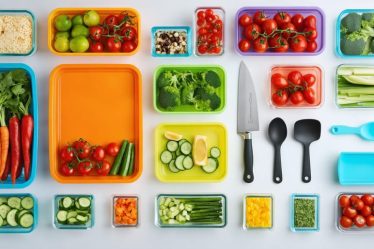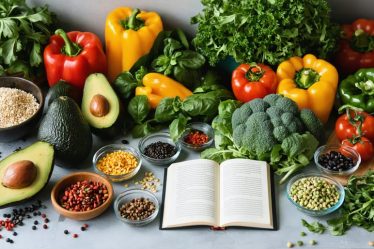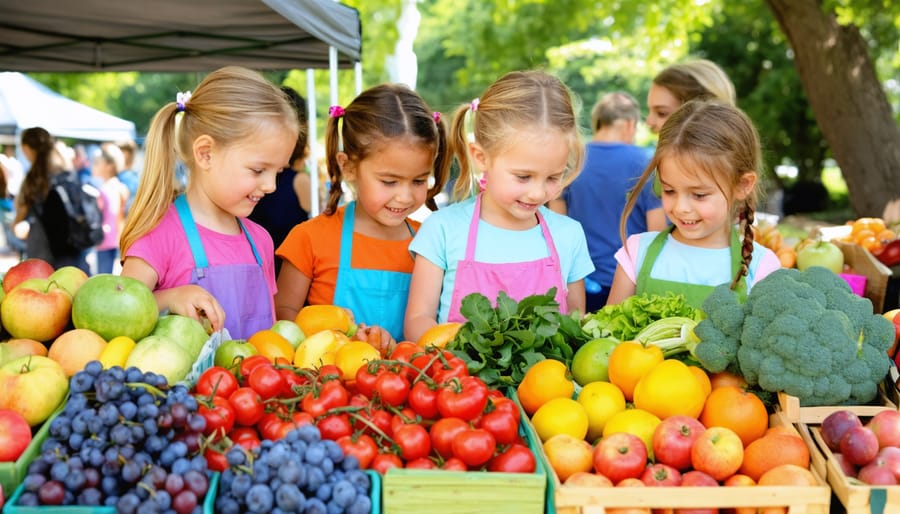
Engage kindergarteners with interactive nutrition lessons that make healthy eating exciting. Create a “Rainbow of Fruits and Veggies” art project where kids draw, color, and learn about produce in every hue. Turn snack time into a fun learning experience by discussing the nutritional powerhouses on their plates. Teach the concept of “sometimes foods” vs. “everyday foods” using a hands-on sorting game with empty food packages.
Rainbow Food Scavenger Hunt
Teaching kids about the importance of eating a colorful variety of fruits and vegetables is a key part of early nutrition education. A fun way to engage kindergarteners in this lesson is with a “Rainbow Food Scavenger Hunt” game.
To play, provide each child with a printable checklist featuring different colored fruits and veggies. The goal is to find and try foods from each color category throughout the week. For example, the list might include:
Red: Strawberries, tomatoes, red bell peppers
Orange: Carrots, oranges, sweet potatoes
Yellow: Bananas, squash, corn
Green: Spinach, green apples, cucumbers
Blue/Purple: Blueberries, grapes, eggplant
Encourage kids to involve their families in the scavenger hunt by exploring the produce section at the grocery store or visiting a farmers market together. As they discover each new food, have them check it off their list and share their experiences with the class.
To make the game even more interactive, plan a tasting party where kids can sample a rainbow of healthy snacks. Prepare simple dishes like fruit kabobs, veggie faces, or a colorful salad. Discuss how each food helps their bodies grow strong and how eating a variety of colors provides different nutrients.
Extend the lesson by reading books about fruits and vegetables, like “Eating the Alphabet” by Lois Ehlert or “I Eat a Rainbow” by Bobbie Kalman. Have kids draw pictures of their favorite colorful foods or create a class collage featuring a rainbow of healthy ingredients.
By making nutrition education hands-on and playful, kindergarteners will be excited to explore new foods and learn about the benefits of eating a diverse, colorful diet. The “Rainbow Food Scavenger Hunt” is a simple yet effective way to lay the foundation for lifelong healthy eating habits.
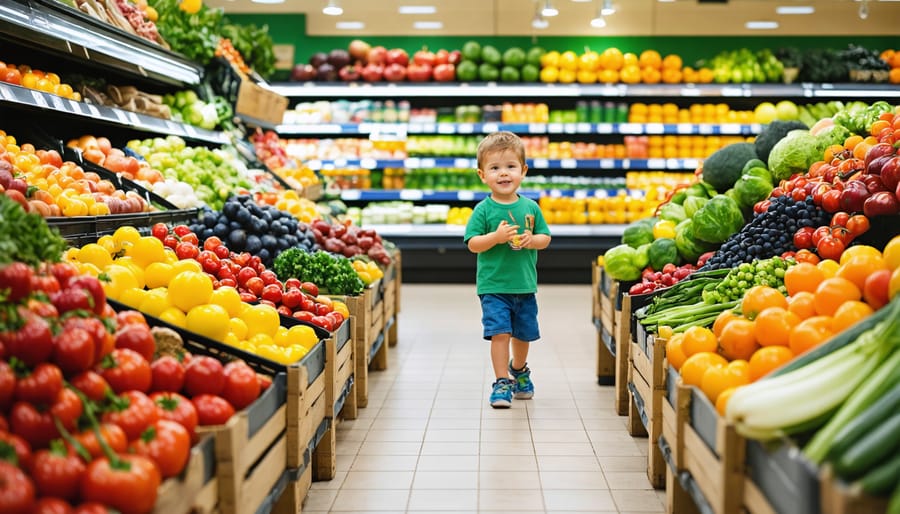
Blind Taste Test Challenge
A blind taste test is an exciting way to introduce new healthy foods to kindergarteners. Set up a variety of fresh fruits, vegetables, and whole grain snacks on plates, and have the kids wear blindfolds as they sample each item. Encourage them to describe the flavors, textures, and aromas they experience, and then reveal the mystery foods. This engaging activity helps children explore unfamiliar tastes without any preconceived notions or visual biases.
When selecting kid-friendly options for the taste test, consider foods that are colorful, easy to eat, and have varied textures. Slice fruits like apples, pears, and melons into bite-sized pieces, and choose vegetables such as baby carrots, cherry tomatoes, and sliced cucumbers. Include a mix of sweet and savory options to appeal to different taste preferences. You can also incorporate healthy dips like hummus or yogurt for an added layer of flavor and nutrition.
Remember to prioritize safety by checking for any food allergies or sensitivities among the children before conducting the taste test. Provide a safe and comfortable environment where the kids feel encouraged to try new things without pressure. After the reveal, discuss the importance of eating a rainbow of fruits and vegetables for optimal health and growth. This fun, interactive lesson will help kindergarteners develop a positive relationship with nutritious foods and foster a sense of adventure in their eating habits.
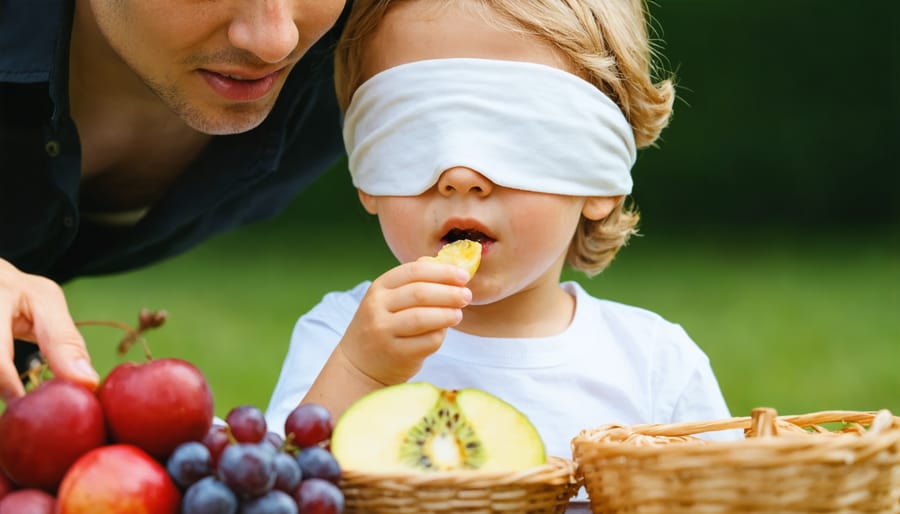
Grow Your Own Salad Garden
Growing your own mini salad garden is a fun, hands-on way to get kids excited about eating their veggies! Here’s a simple step-by-step guide to help your kindergarteners create their very own salad garden:
First, gather your supplies. You’ll need small pots or containers, potting soil, and a variety of lettuce and herb seeds like lettuce, spinach, arugula, basil, and chives. Have the kids decorate their pots with stickers or paint to make it extra fun!
Next, fill each pot about 3/4 full with potting soil. Let the kids poke their fingers in to create small holes for the seeds. Drop a few seeds into each hole and gently cover them with a sprinkle of soil.
Water the newly planted seeds and place the pots in a sunny spot, like a windowsill. Explain to the kids that their little seeds need sunlight, water, and time to grow into tasty plants they can eat!
Over the next few weeks, have the children take turns watering their mini gardens and observing the growth process. Once the greens are about 4 inches tall, show them how to carefully snip off leaves for their very own salad harvest.
Make it a celebration by setting up a “Salad Bar” where the kids can mix and match their homegrown greens, along with other veggies, to create colorful, nutritious salads. They’ll beam with pride knowing they grew the ingredients themselves!
Throughout the planting and growing journey, take opportunities to teach about plant life cycles, the importance of healthy soil, and how eating a rainbow of veggies helps our bodies grow strong.
By involving children in the process from seed to plate, you’ll cultivate a genuine appreciation for fresh, wholesome foods that will serve them well for years to come. Happy gardening!
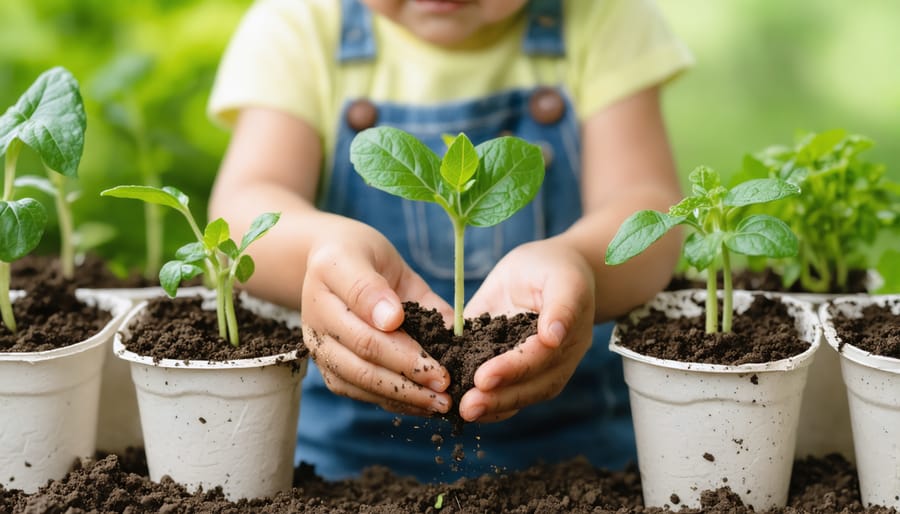
Build-Your-Own Healthy Snack Station
Building a DIY snack station is a fun way to empower kids to make healthy choices. Set up a buffet of nutritious options like fresh fruits, veggies, whole grain crackers, yogurt, and cheese. Provide child-friendly utensils and small cups or plates to encourage portion control.
To make it exciting, create theme days like “Rainbow Snacks” with colorful produce or “Dippin’ Delights” featuring hummus, guacamole, and yogurt dips. Offer simple combo ideas like apple slices with peanut butter, celery with cream cheese, or cucumber rounds topped with tuna salad.
Make sure to include a variety of textures and flavors to keep things interesting. Crunchy carrots, creamy avocado, juicy berries, and smooth yogurt provide a satisfying mix. Don’t forget to rotate options regularly to prevent boredom and introduce new foods.
For added engagement, let kids assemble their own creations. Provide picture recipes showing how to layer parfaits, roll-up tortilla pinwheels, or skewer fruit kebabs. Encourage creativity while emphasizing balance – pairing a protein, healthy fat, and fiber is a winning combo.
Have kids pitch in with easy prep tasks like washing produce, scooping yogurt, or filling water cups. This builds excitement and independence. Snack time is also perfect for social skill practice as kids take turns and share.
Remember, role modeling is key. Show enthusiasm for nutritious foods and let kids catch you munching on the healthy snacks you’re offering. With regular exposure in a positive environment, kids develop lifelong healthy habits. The DIY snack station proves that eating nutritiously can be fun, empowering, and delicious.
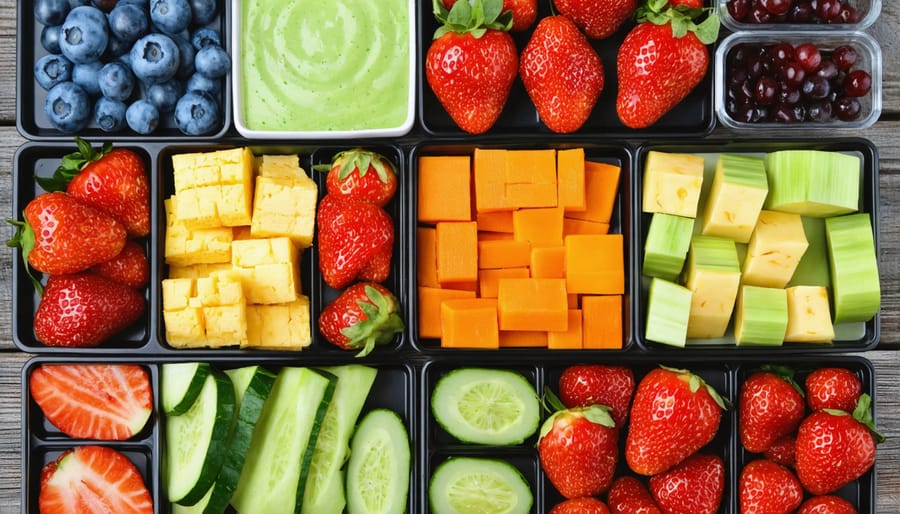
Storybook Cooking Adventures
Storybooks are a fantastic way to introduce healthy eating concepts to kindergarteners in a fun, engaging manner. By pairing favorite picture books with simple, nutritious snack ideas, you can create memorable learning experiences that kids will love. For example, after reading “The Very Hungry Caterpillar” by Eric Carle, have children assemble colorful fruit skewers featuring the vibrant foods mentioned in the story. This hands-on activity reinforces the book’s message about the importance of eating a variety of fruits.
Another delightful book and snack combo is “Growing Vegetable Soup” by Lois Ehlert paired with a kid-friendly veggie tray. After reading about the process of planting, tending, and harvesting vegetables, let children explore an array of fresh veggies like carrots, cucumbers, and bell peppers served with a healthy dip. This sensory experience encourages trying new foods and appreciating the flavors of garden-fresh produce.
For a whimsical treat, read “If You Give a Mouse a Cookie” by Laura Numeroff and prepare oatmeal raisin cookie bites together. Use whole grain oats, unsweetened applesauce, and a touch of cinnamon for a nutritious twist on the classic cookie. As you bake, discuss how certain ingredients like oats and raisins offer health benefits, planting the seed for making mindful food choices.
By combining the magic of storybooks with interactive cooking adventures, you’ll help kindergarteners develop positive associations with healthy foods and foster a lifelong love of nourishing their bodies. Encourage children to share their own ideas for book and snack pairings, and watch their creativity and enthusiasm for healthy eating blossom.
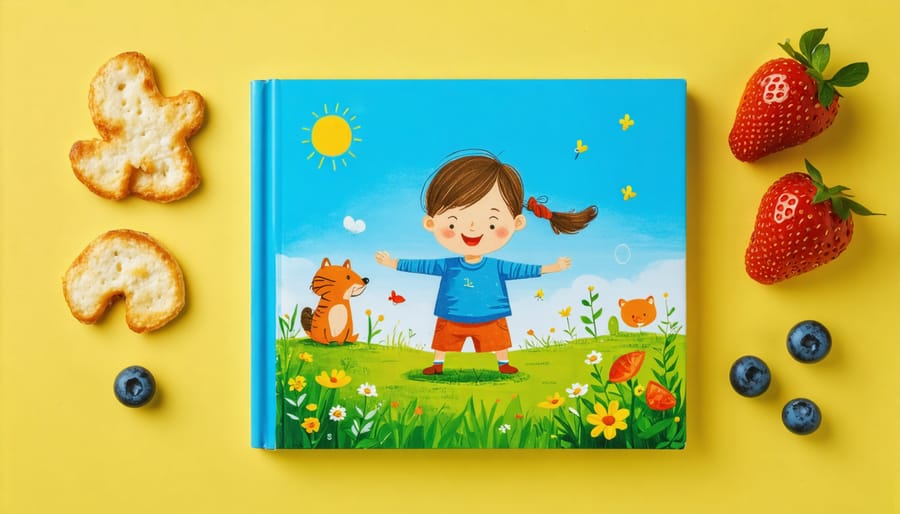
Conclusion
Teaching kindergarteners about nutrition doesn’t have to be boring or preachy. By incorporating fun, hands-on activities and games, you can help young children develop a positive relationship with healthy foods that will last a lifetime. From rainbow-inspired snacks to interactive sorting games, there are countless ways to make nutrition fun and engaging for little learners. So pick one idea from this list to try with your kindergarteners this week – you might be surprised at how excited they get about fruits, veggies, and wholesome eating habits! Remember, setting a strong foundation now can pave the way for a healthier future.


